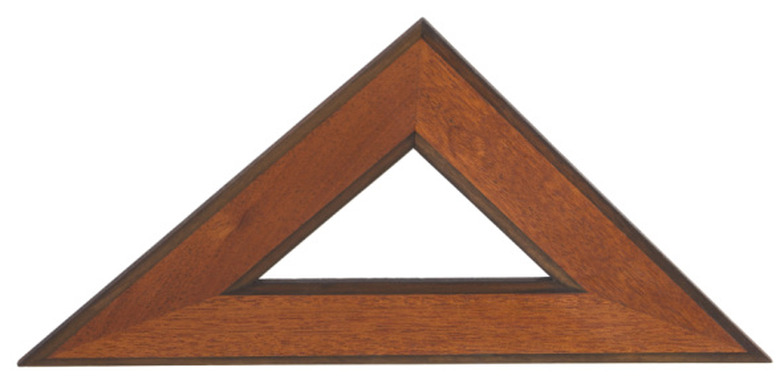How To Find Triangle Angle Measurements
The sum of the three angles in a triangle always equals 180 degrees. The triangle may be right, isosceles, acute, obtuse, equilateral or scalene, yet the sum of all the angles is still 180 degrees.
Use the properties from each type of triangle to solve the question of angle measurement. When you keep these specific characteristics in mind, it's a matter of accurately computing the angle measurement for finding angles by degrees.
Finding Angles By Degrees: Two Known Angles
Step 1
Draw a triangle if the image is not provided. Label each known angle with the corresponding measurements.
Step 2
Add the two measurements together.
**Example:**
Angle A – 30 degrees
Angle B – 45 degrees
30 degrees + 45 degrees = 75 degrees
Step 3
Find the measure of angle C by subtracting the total of the two measurements from 180 degrees to find the measure of the third angle.
180 – 75 = 105
Angle C = 105 degrees
Step 4
Add the answer and the two supplied angle measurements to check for accuracy. The sum of all three angles should equal 180 degrees.
30 degrees + 45 degrees + 105 degrees = 180 degrees
Finding Angles By Degrees: One Known Angle
Step 1
Draw a triangle if the image is not provided. Isosceles and right triangles are common triangles used when one angle measurement is supplied. Label each known angle with the supplied measurement.
Step 2
Form an equation, using the properties of the type of triangle presented in the problem that equals 180 degrees. Isosceles triangles contain equal angle measurements adjacent to the equal length sides while right triangles contain one 90-degree angle.
**Isosceles Example:**
Angle A (adjacent to equal side angle) = x
Angle B (adjacent to equal side angle) = x
Angle C = 80 degrees
x + x + 80 degrees = 180 degrees
**Right triangle example:**
Angle A = right angle = 90 degrees
Angle B = 15 degrees
Angle C = x
90 degrees + 15 degrees + x = 180 degrees
Step 3
Solve the equation for the value of "x" by subtracting the digits from 180 degrees.
**Isosceles example:**
x + x + 80 = 180
2x = 100
x = 50 degrees
**Right triangle example:**
90 + 15 + x = 180 degrees
105 + x = 180 degrees
x = 75 degrees
Step 4
Add the computed and supplied angle measurements to ensure it equals 180 degrees.
Isosceles example: 50 + 50 + 80 = 180 degrees
Right triangle example: 90 + 15 + 75 = 180 degrees
Finding Angles By Degrees: No Known Angles
Step 1
Sketch an equilateral triangle, which is a polygon with three equal sides and three equal angles. Label each angle measurement with an "x" representing the unknown measurement since equilateral triangles have three angles that are all equivalent to each other (hence the name).
Step 2
Form an equation adding the three unknown measurements equaling 180 degrees, which is the sum of all three angles in any type of triangle.
Angle A = x
Angle B = x
Angle C = x
x + x + x = 180 degrees
Step 3
Solve the equation for "x" by combining the three values to "3x." And then divide each side of the "equals" sign by three.
3x = 180 degrees
x – 180 degrees / 3
x = 60 degrees
Step 4
Check your work by adding each angle measurement together and ensure that the sum of those three angles is equal to 180 degrees.
60 + 60 + 60 = 180 degrees
Cite This Article
MLA
Dawe, Trisha. "How To Find Triangle Angle Measurements" sciencing.com, https://www.sciencing.com/triangle-angle-measurements-8154106/. 15 June 2019.
APA
Dawe, Trisha. (2019, June 15). How To Find Triangle Angle Measurements. sciencing.com. Retrieved from https://www.sciencing.com/triangle-angle-measurements-8154106/
Chicago
Dawe, Trisha. How To Find Triangle Angle Measurements last modified August 30, 2022. https://www.sciencing.com/triangle-angle-measurements-8154106/
